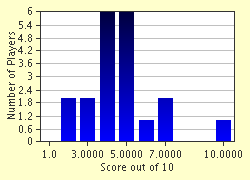Quiz Answer Key and Fun Facts
1. What was one of the major uses for wood-based charcoal in the 19th century?
2. How much wood, turned into charcoal, did it take to keep an iron furnace operating?
3. Charcoal was made by burning wood in a carefully arranged mound, or "pit" as it was paradoxically called. The collier needed to plan a large enough flat surface. How big was the typical pit or mound of wood going to be, at the start?
4. When cut logs were brought to the site, what part of the future mound did the collier build first? When the mound was burning, this part could be stopped or opened to let more or less air in.
5. Once the collier had the pit carefully built of wood stacked around the chimney and covered with dirt to keep air out, the next step was to light the wood. How did he do that?
6. How did the collier slow the fire, if it was burning too fast?
7. How many mounds of burning wood did a collier typically watch at the same time?
8. How long did the collier have to keep watching and tending the mound?
9. When the mound was finished, what remained was a much smaller pile of charcoal. What happened next?
10. One pit or mound has now turned an acre of wood into charcoal. How soon could a collier come back and cut the same acre again?
Source: Author
littlepup
This quiz was reviewed by FunTrivia editor
bloomsby before going online.
Any errors found in FunTrivia content are routinely corrected through our feedback system.

